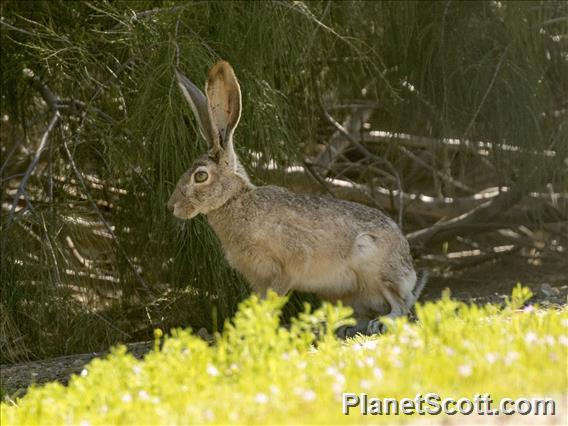Black-tailed Jackrabbit (Lepus californicus)


About Black-tailed Jackrabbit (Lepus californicus)
- Kingdom: Animals
- Phylum: Chordates
- Class: Mammals
- Order: Lagomorpha
- Family: Leporidae
The black-tailed jackrabbit, also known as the American desert hare, is a common hare of the western United States and Mexico, where it is found at elevations from sea level up to 10,000 ft (3,000 m). Reaching a length around 2 ft (61 cm), and a weight from 3 to 6 lb, the black-tailed jackrabbit is one of the largest North American hares. Black-tailed jackrabbits occupy mixed shrub-grassland terrains. Their breeding depends on the location; it typically peaks in spring, but may continue all year round in warm climates. Young are born fully furred with eyes open; they are well camouflaged and are mobile within minutes of birth, thus females do not protect or even stay with the young except during nursing. The average litter size is around four, but may be as low as two and as high as seven in warm regions.
Source: Wikipedia
Visits
-
2006-09-10
Arrowhead Marsh, United States of America -
2008-02-23
Cabo Pulmo, Mexico -
2008-12-06
Solano County Farmlands, United States of America -
2009-06-01
Redwood Valley, United States of America -
2013-04-20
Attwater Prairie Chicken National Wildlife Refuge, United States of America -
2013-05-12
Redwood Valley, United States of America -
2013-07-02
Yolla Bolla Wilderness, United States of America -
2014-02-22
Panoche Valley, United States of America -
2014-06-14
Peaarson-Arastradero Preserve, United States of America -
2014-09-23
Redwood Valley, United States of America -
2017-03-04
Panoche Valley, United States of America -
2019-03-02
Las Cienegas National Conservation Area, United States of America




